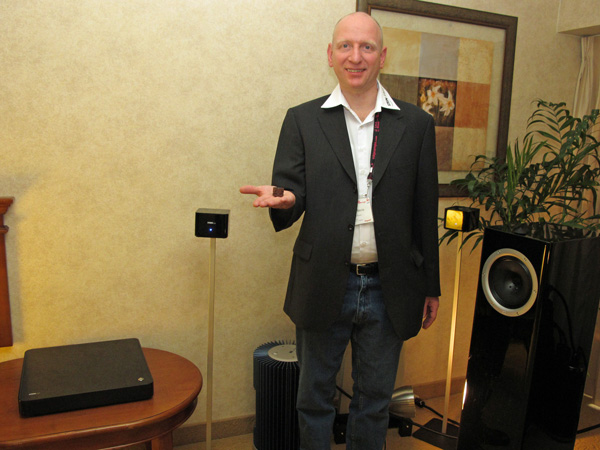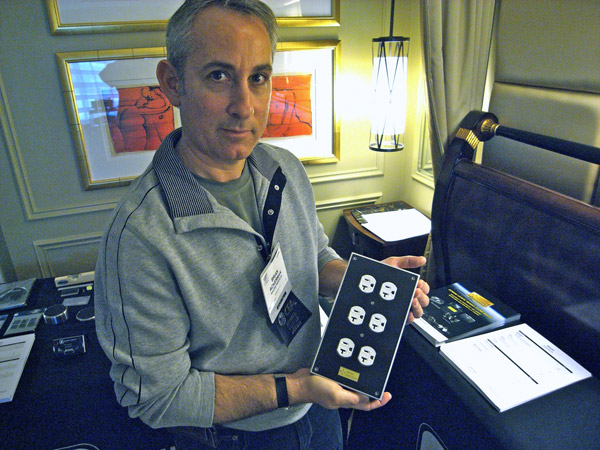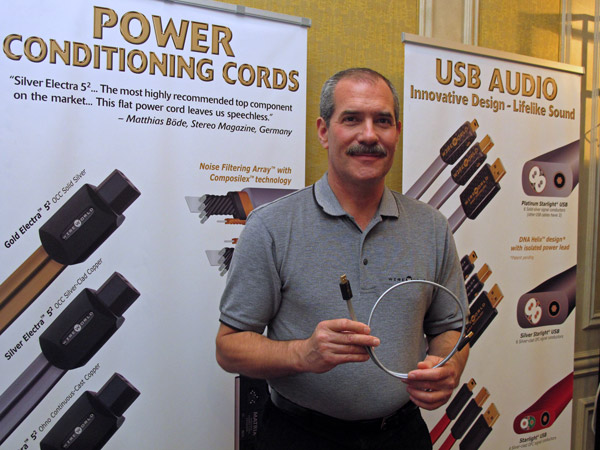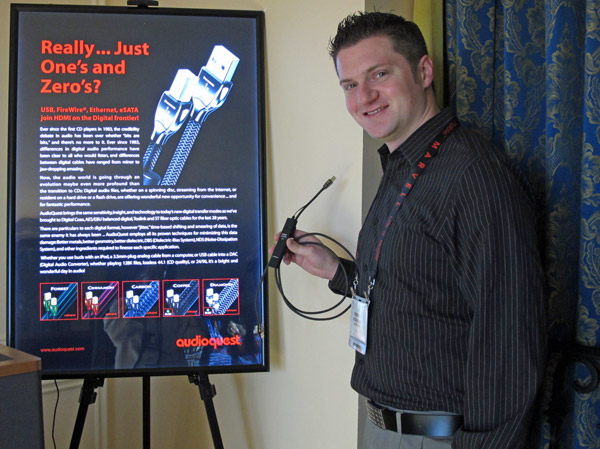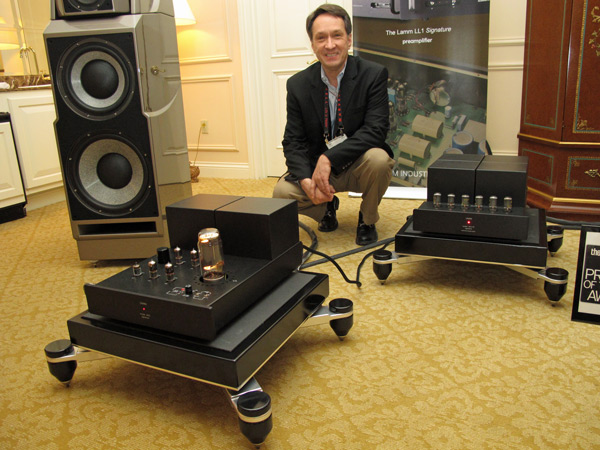Peak Consults Chords
Bluebird Music's Jay Rein wanted to hear the Bluetooth-driven Chordette Gem-based system at the front of the room, with Spendor A6 speakers, but my attention was drawn to the familiar-looking speakers at the other end of the room, Peak Consult El Diablo Vs ($89,000/pair), which Michael Fremer reviewed in May 2007. Jay explained that he is ow the North American distributor for these Danish speakers.
The speakers were being driven by Chord SPM1400 monoblocks ($$32,900/pair) and a Chord CPS5000 preamp, with van den Hul's new Mountain interconnects and Nova speaker cables. Jay put the Reference Recordings CD of Scheherazade (RR-89CD) with Jose Serebrier conducting the London Philharmonic Orchestra into the Chord Red Reference Mk,II CD player ($25,900) and for an all-too-brief interlude, I was transported from the fake glitz of Las Vegas into the more real sonic world of the Arabian Nights.


